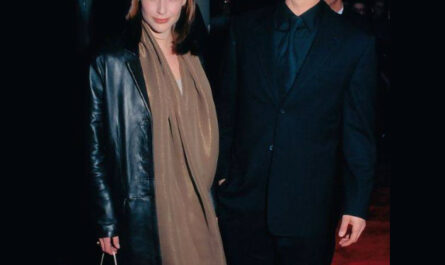In the realm of acting, there are few names as synonymous with dedication, intensity, and transformative performances as Joaquin Phoenix. Throughout his illustrious career, Phoenix has continually pushed the boundaries of his craft, immersing himself fully in the characters he portrays to deliver performances that are both mesmerizing and unforgettable. Nowhere is this more evident than in his portrayal of the iconic villain, the Joker, in the 2019 film. In this article, we will explore the Phoenix Effect—Joaquin Phoenix’s immersive approach to character preparation and performance—and delve into the methods he employed to bring the Joker to life on screen.
Physical Transformation: The Power of the Body
One of the most striking aspects of Joaquin Phoenix’s portrayal of the Joker was his physical transformation for the role. Known for his willingness to undergo drastic changes for his characters, Phoenix lost a significant amount of weight to reflect Arthur Fleck’s mental and physical decline throughout the film. This physical transformation not only added authenticity to his performance but also served as a powerful tool for Phoenix to inhabit the character on a deeper level.
By altering his appearance, Phoenix was able to tap into Arthur Fleck’s inner turmoil and vulnerability, embodying the character’s sense of alienation and despair with haunting precision. From his emaciated frame to his sunken eyes and hollow cheeks, Phoenix’s physical transformation was a testament to his commitment to authenticity and his dedication to his craft.
Crafting the Laugh: Finding the Voice of the Joker
One of the most iconic aspects of the Joker is his laugh—a chilling, manic cackle that sends shivers down the spine. For Joaquin Phoenix, capturing the essence of the Joker’s laugh was a crucial element of his performance. Reports suggest that Phoenix spent a considerable amount of time working on developing a unique and unsettling laugh for his portrayal, experimenting with different tones, pitches, and cadences until he found the perfect expression of the character’s twisted psyche.
The result was a laugh that was both haunting and unforgettable—a visceral manifestation of the Joker’s inner turmoil and descent into madness. From the high-pitched squeals of joy to the guttural, almost painful gasps for air, Phoenix’s laugh was a masterclass in character work, showcasing his meticulous attention to detail and his ability to channel the essence of a character through sound alone.
Method Acting: Living in the Skin of the Character
Method acting is a technique used by many actors to fully immerse themselves in their characters, blurring the lines between fiction and reality to achieve a deeper understanding of their roles. For Joaquin Phoenix, method acting was a central component of his approach to portraying the Joker. Reports suggest that Phoenix stayed in character to some degree even off set, maintaining Arthur Fleck’s psychological state and emotional mindset throughout the duration of the film’s production.
By living in the skin of the character, Phoenix was able to inhabit Arthur Fleck’s world with a level of authenticity and emotional truth that is rarely seen in cinema. From his mannerisms and speech patterns to his thought processes and emotional responses, Phoenix’s commitment to the role was unwavering, allowing him to deliver a performance that was as raw and uncompromising as it was mesmerizing.
Backstory Development: Crafting a History for the Character
While the film itself doesn’t delve too deeply into Arthur Fleck’s past, reports suggest that Joaquin Phoenix developed a detailed backstory for the character to inform his performance. Drawing on his own research and imagination, Phoenix crafted a rich and nuanced history for Arthur Fleck—a history marked by trauma, pain, and a profound sense of alienation from society.
This backstory provided Phoenix with valuable insights into the character’s motivations, desires, and fears, allowing him to bring a depth and complexity to his performance that transcended the limitations of the script. From Arthur Fleck’s troubled childhood to his struggles with mental illness and societal rejection, Phoenix’s backstory development was a testament to his dedication to his craft and his commitment to bringing authenticity and depth to his characters.
Conclusion: The Legacy of Joaquin Phoenix’s Immersive Approach
In the annals of cinematic history, few performances stand out as boldly and memorably as Joaquin Phoenix’s portrayal of the Joker. Through his immersive approach to character preparation and performance, Phoenix breathed new life into an iconic role, delivering a performance that was as haunting as it was brilliant.
From his physical transformation to his meticulous attention to detail, Phoenix’s dedication to his craft was evident in every frame of the film. By immersing himself fully in the character of the Joker, Phoenix created a portrayal that will be remembered and revered for generations to come—a testament to the power of immersive acting and the enduring legacy of one of cinema’s greatest talents.



